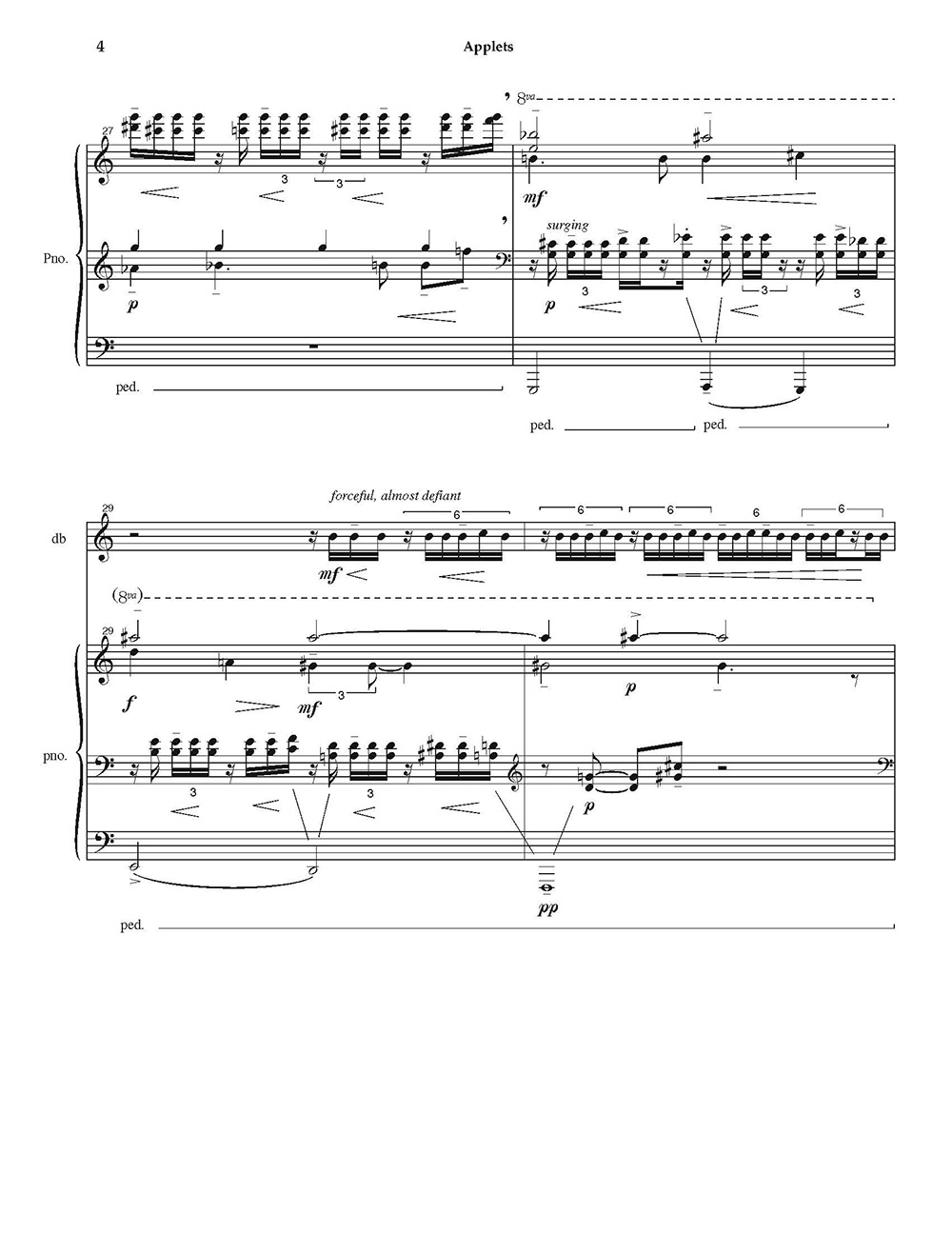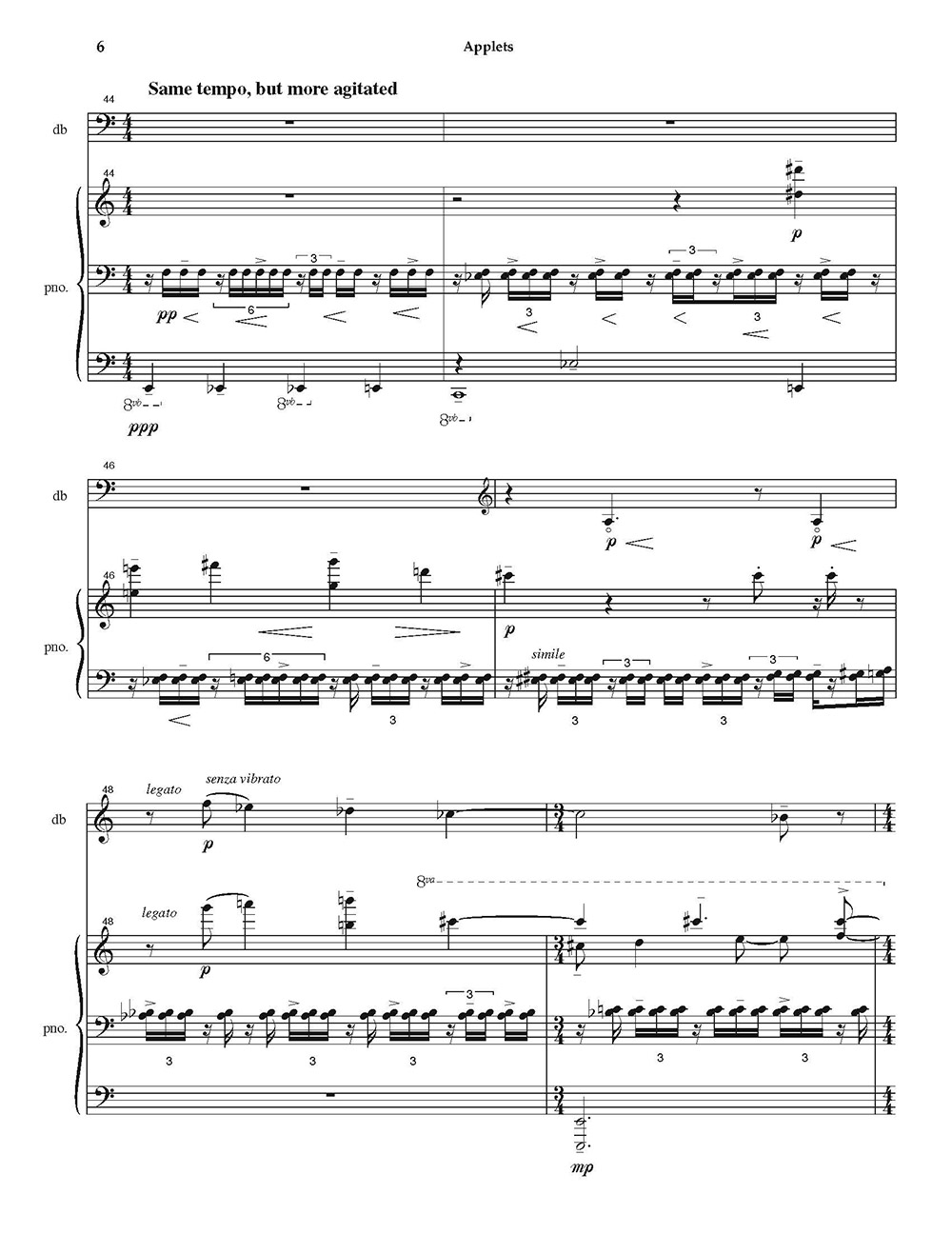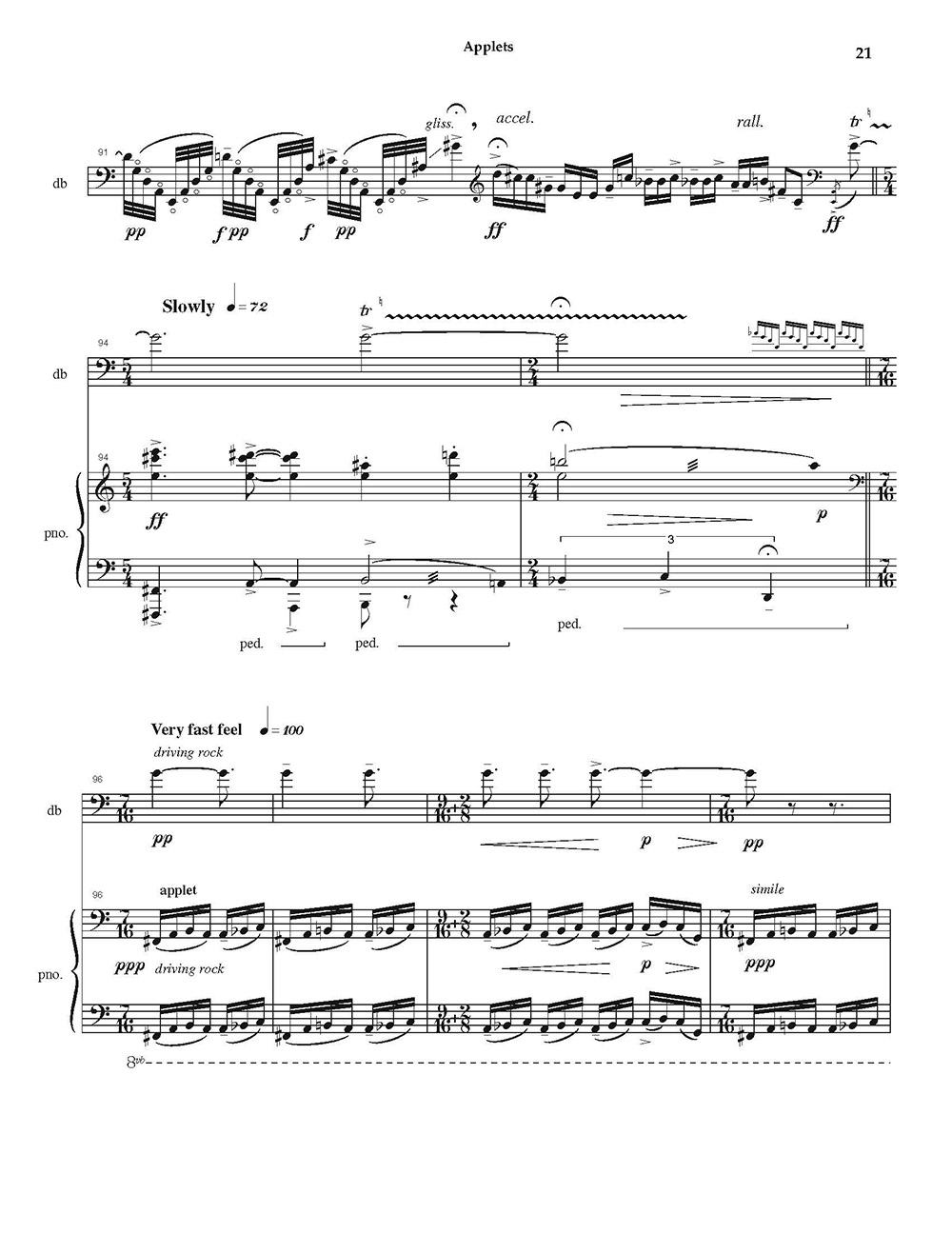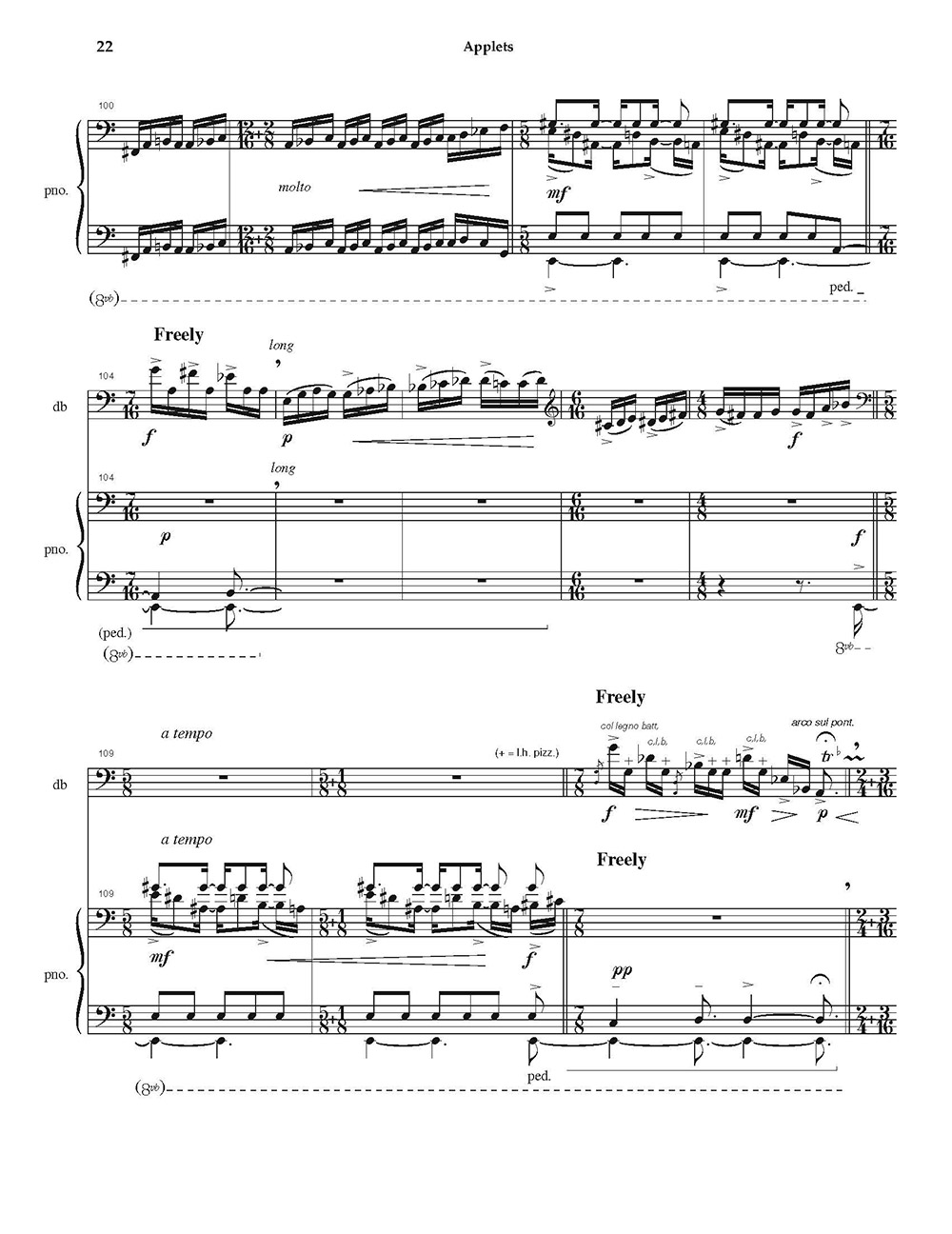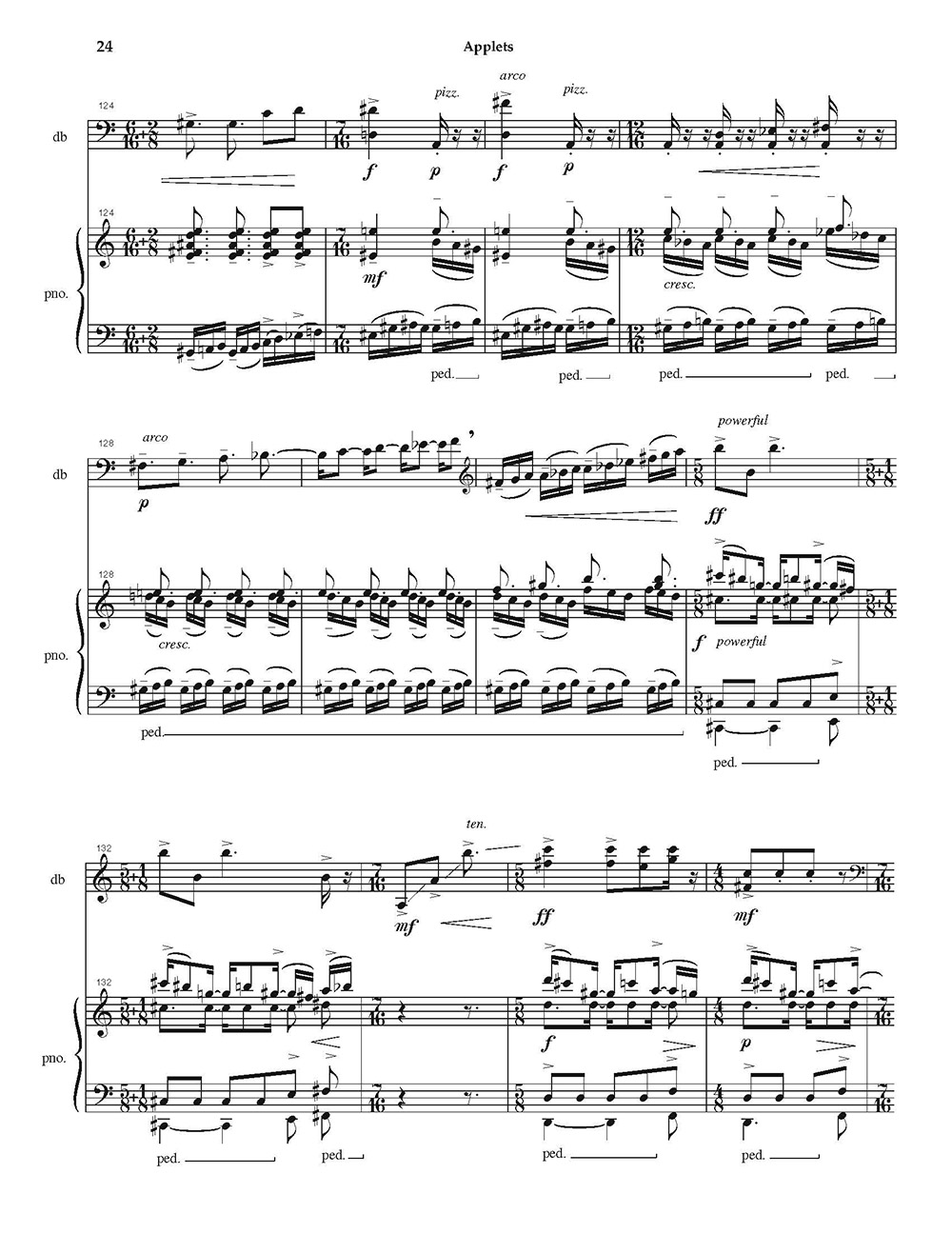Applets (1998-99)
for double bass and piano, 14 minutes
Instrumentation
double bass, piano
solo and non-solo tuning versions available
Recording
A Fiery and Still Night, Capstone (2006)
A two-movement work which explores different facets of the double bass: first movement is slow and lyrical, the second is fast and rock-inspired.
Listen
Applets (excerpt 1)
Applets (excerpt 2)
Performers: Michael Cameron, double bass, Andrew Simpson, piano
Program Notes
Applets is a two-movement work for double bass and piano, written for bassist Michael Cameron. The first movement, in slow tempo, explores the lyrical capacity of the bass, as well as its tremendous range. The second movement is a technical study, in which the bassist's powers are fully extended, from the rapid passagework on the low strings of the opening cadenza to the smooth, rock-inspired figurations in the second half of the movement. The piece requires great sensitivity to ensemble by both players, and requires both technical and musical stamina.
The piece may be played either in solo tuning (F#-B-E-A), with the strings tuned a major second higher than orchestral tuning, or non-solo tuning (E-A-D-G).
The duration of the piece is approximately 13 minutes. The first movement is roughly 6:45, the second roughly 6:15. Though it is preferred that both movements be played together, in the published order, either movement can be played alone.
The title refers to the compositional technique behind the work. The melodic and harmonic material is derived from enclosed "systems" of pitches, rhythms, and intervals which I have devised for the piece. Each movement has a separate system. The material of a system lies behind practically every gesture in the piece. However, the system itself can be summarized by a short motive or gesture which symbolizes it: I have named these motives "applets." Applets appear in both movements. In addition, the term "applet," in computer terminology, refers to a software program which allows for special effects on internet web pages, such as blinking words or moving lines of text. In so far as these applets "spice up" the character of a web page, I have adopted the term for these summarizing gestures; because, in addition to serving as the system in small, they are also easily remembered, interesting ideas. They are, to borrow another concept from pop music, the equivalent of a song's "hook," the main idea remembered in the piece.
Another gesture borrowed from rock and jazz in the second movement is the "riff-and-fill" technique, in which an in-tempo tutti passage (represented here by the piano) alternates with out-of-tempo passagework by the soloist (here, the bass).
In unbarred passages, accidentals apply only to the note they immediately precede, with the exception of repeated notes. In barred passages, the standard practice for accidentals is followed.
—Andrew Earle Simpson

